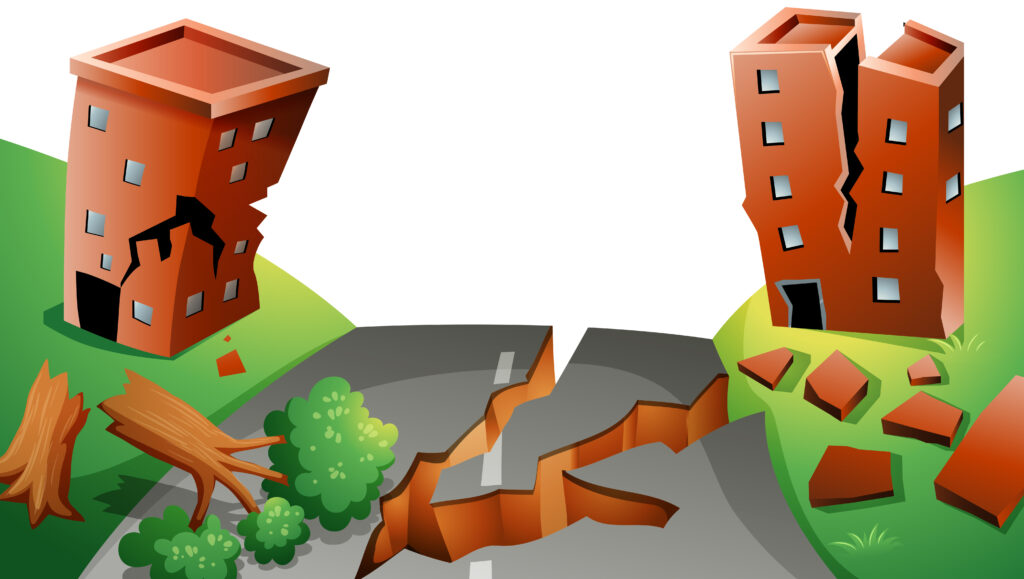
As climate change accelerates, various environmental impacts are becoming increasingly apparent. One of the more insidious effects is subsidence, a phenomenon where the ground beneath a building sinks or shifts. It can cause significant damage to homes and infrastructure. Preparing your home for climate change-related subsidence is crucial to ensuring its structural integrity and safety. In this guide, we will explore practical steps you can take to mitigate the risks associated with subsidence.
Understanding Subsidence
Subsidence occurs when the ground loses moisture and contracts, often due to prolonged drought or changes in groundwater levels. Heavy rainfall can also exacerbate it, which can erode supporting soils. Homes built on clay soils are particularly vulnerable, as these soils expand and contract significantly with moisture changes.
Signs of Subsidence
It’s essential to recognise the signs of subsidence:
- Cracks in walls, particularly around doors and windows.
- Doors and windows that stick, or fail to close properly.
- Uneven or sloping floors.
- Gaps forming between walls and floors.
Steps to Prevent Subsidence Damage of Your Home
Conduct a Structural Assessment
Engage a professional structural engineer to assess your home’s current condition. They can identify existing vulnerabilities and recommend specific reinforcements.
Improve Soil Drainage
Proper drainage around your home can prevent water accumulation that leads to soil expansion and contraction. Consider the following measures:
- Gutters and Downspouts: Ensure they direct water away from your foundation.
- French Drains: These underground pipes help redirect water away from your home’s base.
- Soakaways: Are pits filled with gravel that help disperse water into the ground away from your home.
Reinforce Foundations
Strengthening your home’s foundation can prevent significant damage from subsidence. Options include:
- Underpinning: Extending and reinforcing the existing foundation.
- Mini Piling: Installing deep, narrow piles that transfer the building’s load to more stable ground.
Manage Vegetation
Trees and large shrubs near your home can exacerbate subsidence by drawing moisture from the soil. To mitigate this:
- Choose Plants Wisely: Opt for plants with less aggressive root systems.
- Regular Maintenance: Keep trees and shrubs pruned, and consider removing those too close to your home.
- Monitor Ground Movement: Install monitoring equipment to track any ground movement around your home. It can provide an early warning and allow for timely intervention.
- Insure Your Property: Ensure your home insurance policy covers subsidence-related damage. Review and update your coverage as necessary to avoid unexpected costs.
Long Term Strategies for Avoiding Subsidence
Sustainable Landscaping
Implement landscaping strategies that improve soil stability, such as:
Permeable Paving: Allows water to seep through, reducing runoff and soil erosion.
Terracing: Can help manage sloping ground and reduce erosion.
Community Engagement
Work with your local community to address broader issues contributing to subsidence, such as water management and urban planning. Collaborative efforts can lead to more effective solutions.
Policy Advocacy
Advocate for policies that address climate change and promote sustainable land use. Support initiatives that enhance resilience against environmental impacts, including subsidence.
Preparing your home for climate change-related subsidence involves a combination of immediate actions and long-term strategies. You can mitigate the risks, and protect your investment, by taking proactive steps to assess, reinforce, and monitor your property. Stay informed and engaged with your community to ensure a resilient future for all.
Implementing these strategies can significantly reduce the risk of subsidence-related damage to your home, ensuring its safety and longevity in the face of climate change.
FAQs
How often should I assess my home's structure for subsidence?
It’s recommended to have a professional assessment every five years or after any significant climatic events, such as prolonged droughts or heavy rains.
Can subsidence affect newer homes?
Yes, subsidence can affect homes of any age, although older homes with less robust foundations may be more vulnerable.
Are there government grants available for subsidence repairs?
Grant availability can vary by region. For potential financial assistance, it’s advisable to check with local housing authorities.
